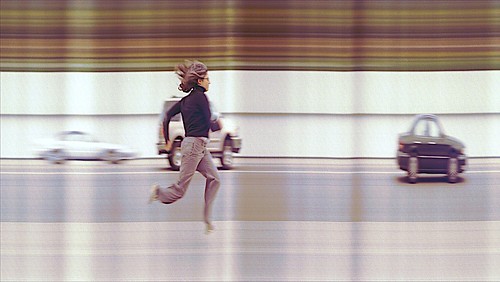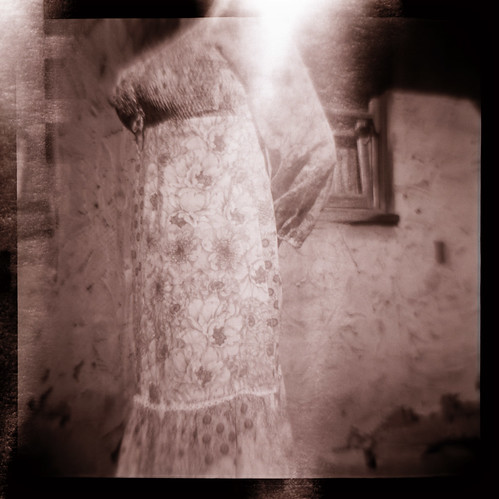Wicked-talented photographer Dan Loflin has written up a tutorial on strip photography with a Hasselblad V-series camera and A-series film magazine (he used an A12 back on a 503cw). Check it out:
It’s pretty simple to rig a hasselblad into an amatuer strip camera, as I’ve done, without altering the mechanics of the camera in any way. However, the results won’t be as perfect as Scott’s (photoace) without a motor drive. You’ll probably get the horizontal banding and inconsistently shaped subjects that you see in my photos. I personally like those qualities, but some might not. I’m working on a bracket not too dissimilar from [Andrew] Davidhazy‘s to take more control over these qualities on my next go ’round.
1 – Creating the 1mm slit: On the back of the camera body, surrounding the rear curtain, is a beveled ridge that mates perfectly with the magazine to seal out the light. Inside that bevel there is enough space to tape two small, thin pieces of black cardboard to leave a 1mm slit. You’ll want to mount the card board so the slit runs horizontally, as the film in a hasselblad runs vertically. I used some really nice, super black, soft-tack permacel paper tape to secure them…
Continue reading instructions and discussion in the Strip Photography group at Flickr
While you’re at it, have a look at Loflin’s photography. He’s a one-man photograpic freakshow who’ll seemingly try any process at least once—and rock it. Even his masking material is pimpin’; Permacel is the Cadillac of gaff photo tape.

